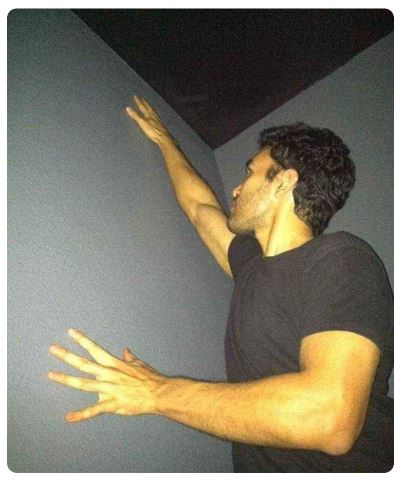What is a hydrofoil?
A hydrofoil refers to a foil that operates in water as well as the type of watercraft that deploy hydrofoil technology.
A foil is the cross-sectional shape of a solid, winglike structure whose movement through a gas, such as water or air, generates substantial lift force. In other words, a foil is a lifting surface such as an airplane wing, propeller, or sail.
So a hydrofoil is basically like an underwater wing attached to the hull of a boat. As the boat increases speed, the hydrofoil(s) generates enough lift to push the watercraft’s hull out of the water and reduce drag.
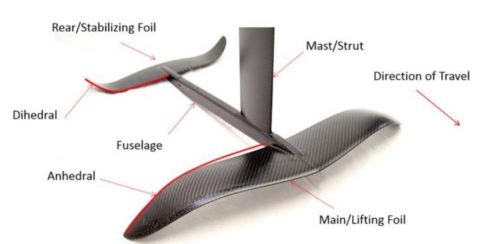
The primary advantages of hydrofoils are:
- Reducing drag and the effects of wave action/turbulence on the hull (which also increases ride comfort).
- Allowing greater speeds for various types of watercraft (due to the hull being lifted above the surface).
- Increasing fuel-efficiency (due to less drag).
What is a hydrofoil used for?
Waterjet-propelled hydrofoils were used by several Navies in the past (primarily for their speed and maneuverability) as anti-submarine boats, missile boats, and patrol boats. Nowadays, most military hydrofoils are discontinued due to their high cost of construction and maintenance.
Instead, hydrofoils are mainly used for commercial transportation, recreation, and water sports.
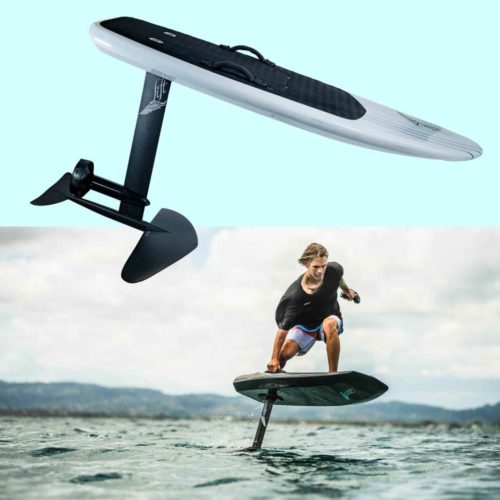
The rise of foiling is becoming a big deal around the world. Although some people may question the legitimacy of the hydrofoil boards used in several types of surface water sports, others see them as the cutting-edge future of surfing, sailboarding, and water skiing.
Surfing (hydrofoiling / foilboarding)
A hydrofoil board (or foilboard) is a surfboard retrofitted with a hydrofoil. It allows the rider to glide above the water as the foilboard picks up speed.
Foil surfing (which is similar to aquaplaning) is an exciting new sport that lets surfers catch all kinds of waves, from big to small, and maneuver through areas that simply cannot be accessed with a traditional surfboard (thanks to electric motors).
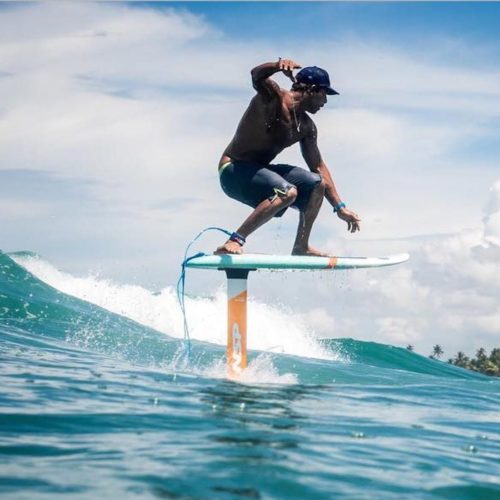
Surfing waves with a foilboard has a unique advantage in that gliding above the water reduces surface friction and allows for split second angling at 90 degrees. Hydrofoils are also effective at exploiting underwater swell energy whether its wave surfing or water skiing.
Windsurfing
Windfoiling is an advanced class of windsurfing using similar equipment and a specialized foilboard.
Also known as foil windsurfing, this hydrofoil evolution is set to become a new event in the 2024 Summer Olympics known as IQFoil (joining the nine other foiling events already featured). It is similar to Formula Windsurfing except that only one sail is deployed.
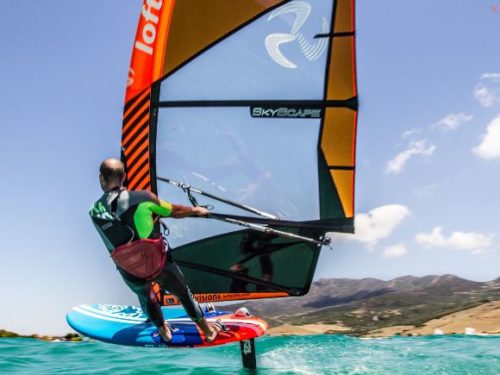
Sailing
Hydrofoils are an integral part of the sport of sailing such as those found in the America’s Cup racing yachts and catamarans.
Sailing hydrofoils apply the same basic principles as an aircraft wing, except they are retractable/fixed keels attached to the hull or rudder of sailboats to enhance control and generate lift.
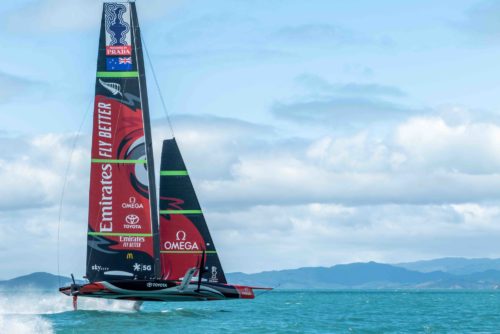
They are designed in four configurations (‘T’, ‘C’, ‘S’, ‘L’), each providing varying degrees of single and multidirectional lift.
Transportation
Hydrofoils are currently used for commercial transportation as high-speed ferries and patrol craft in various parts of the world. Regular hydrofoil services operate in Japan, Hong Kong, Vietnam, Russia, Greece, Italy, Turkey, Croatia, and other countries.
Passenger hydrofoils are faster and comfortable than conventional ferries. A successful type of waterjet-propelled hydrofoil used for carrying passengers is the Boeing 929 Jetfoil. Many aircraft systems were adapted to its design.
Although a few Boeing-built Jetfoils remain active, the Jetfoil design is licensed to other manufacturers and jetfoil rides are popular wherever they see active service (mostly in Hong Kong and Japan).
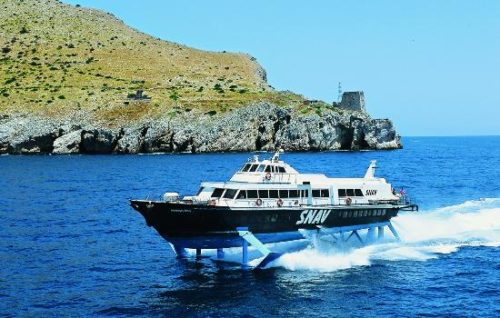
Foil-based Personal Watercraft (PWC)
A PWC, also known as a jet ski or water scooter, is a small pleasure craft that uses jet propulsion. They are designed for one to three people with the driver either sitting down or standing up.
One of the most innovative applications of hydrofoil technology to personal watercraft is the Quadrafoil Q2A, which is a two-seater PWC with an electric motor and four power-steered hydrofoils that allow it to turn without reducing speed or stability.
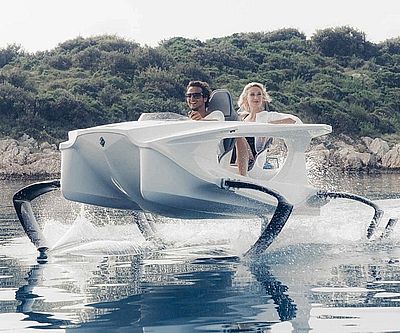
Other water activities & innovations
Foiling is really taking the world of surface water activities by storm. It’s not just a technological innovation in sport, but also a recreational trend for anyone who enjoys being out in the water.
Hydrofoils are now adapted to conventional kayaks (known as “flyaks”) allowing speeds up to 17 mph in calm conditions. It utilizes two hydrofoil fins to create lift.
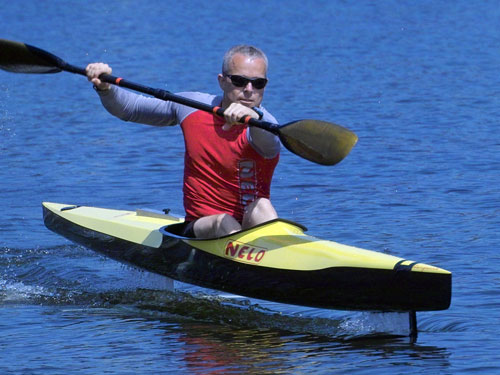
In kiteboarding, hydrofoil kiters can angle higher into the wind because foilboards mitigate the effects of rough water conditions.
Electric hydrofoil boards, such as the innovative Lite eFoil, feature a virtually silent electric propeller that lets the rider fly effortlessly across the water without having to paddle or use their legs. Imagine a faster and more maneuverable version of a stand-up paddleboard.
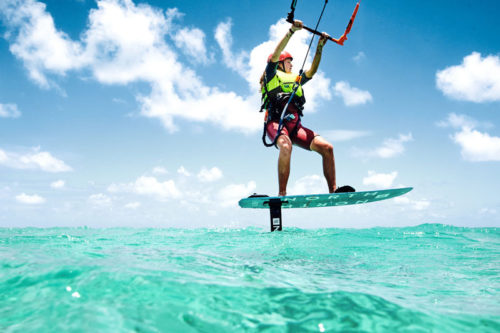
Retractable hydrofoils in modern luxury yachts and motor catamarans make it possible to hydrofoil up to 80 mph under most water conditions.
How does a hydrofoil board work?
Hydrofoils attached to surfboards are usually shaped like a fin or airplane wing. The front and rear stabilizer foil wings are connected to a narrow mast at the back side of the board which extends a few feet below the water.
The foil is shaped so that it deflects the flow of water around it to create higher pressure on its bottom surface by channeling the swell energy of waves (including very small waves).
As the rider picks up speed, the hydrofoil will lift the board higher above the surface of the water and the rider will glide across the water with minimal surface friction. The rider can increase lift by leaning back to tilt the hydrofoil up.

Can hydrofoils be used in rough waters?
Yes, hydrofoils can function in rough waters or turbulent wave action. By lifting the foilboard out of the water, the hydrofoil mitigates the surface friction caused by wind, and the surfer can maintain smoother rides through the waves.
Is hydrofoil easier than surfing?
It depends. Hydrofoils are easier than surfing in the sense that you can ride a foilboard almost anywhere in the water, not just where there are barreling waves. For example, you can ride small waves that are just one or two feet.
Other than that, you’ll likely have to adjust for a slightly different feel and stance. Although the take-off is identical to conventional surfing, your overall stance will be a bit different after standing up in order to find the right balance while you’re still learning.
You’ll need to find a comfortable spot to place your back foot over or behind the mast. Pumping, riding steep waves, and creating lift are all similar to regular surfing— you’ll just need to get used to your foot placement.

How much do hydrofoils cost?
You can buy complete hydrofoil packages (board and foil) or add a foil kit to your existing board. The price will vary depending on the size and material of the hydrofoil or board. Some of the cheapest foil kits for surfboards can range from $150 to $250 (wood) and $350 to $1000 (carbon).
Usually, you will find complete setups (board and foil) from $500 to $1500
Kits for windsurf boards are more expensive and will cost at least $2000 and up. Anything bigger than a windsurfer, such as a small sailboat or small catamaran, can be closer to $3000 to $5000. Bigger catamarans can cost up to $30,000.
Electric motor foilboards, such as the eFoil, can run from $4000 to over $15,000 for the full setup.
